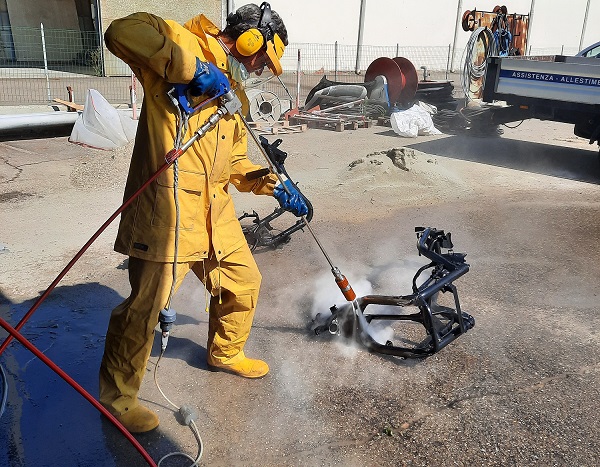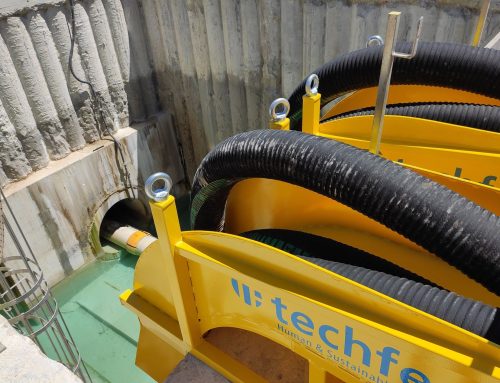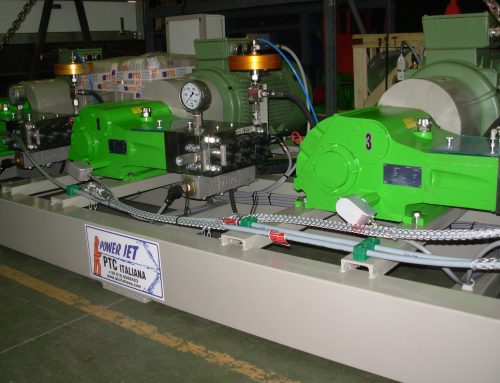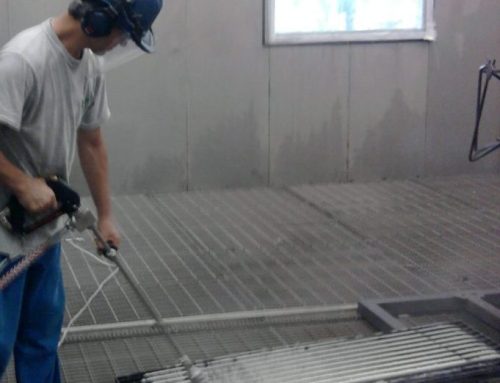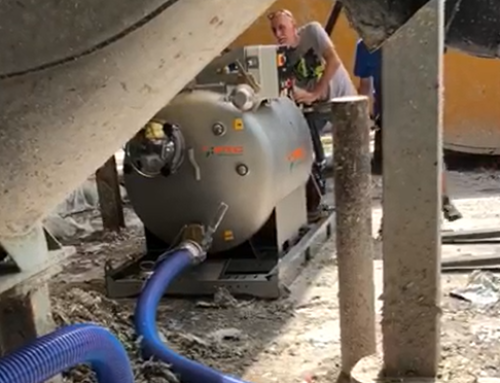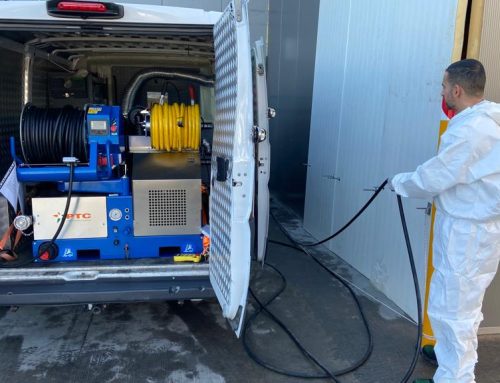Among the main uses of ultra high pressure units, water blasting stands out, without a doubt: let’s find out, then, what it is and what it is used for.
Water cleaning
Water blasting is a hydrocleaning procedure that uses the power of ultra-high pressure units to generate a pressurized jet of water and use it to remove layers of unwanted material from objects, buildings, vehicles and surfaces in general.
The home pressure washer is used by families to easily and effortlessly clean floors, gardens, cars or vehicles. In the same way, albeit with significantly higher equipment and power, water blasting is the industrial cleaning method that uses the force of pressurized water, generated by the ultra high pressure unit – or UHP unit – to obtain the effect of cleaning required on any surface, without any problem related to its shape, whether difficult or irregular.
The surfaces and objects to be subjected to water blasting can be made of concrete, metal or stone, with the only precaution being to adequately regulate the pressure emanating from the UHP unit in order not to damage the less resistant materials. From all this it follows that ultra high pressure units can be used in industrial cleaning and maintenance activities in the most varied sectors, removing any type of heavy accumulation without causing damage to the underlying surface.
How water blasting (ultra high pressure) works
The water jet necessary for water blasting reaches pressures up to 40K PSI: a power capable of cleaning in most industrial applications, such as hydrodemolition of concrete, removal of paint and rust, preparation of surfaces metal and tank cleaning.
Along with pressure, the flow rate of water also plays an important role in the sandblasting process.
The equipment dedicated to water blasting are high pressure hydrodynamic units with electric or endothermic motor, manually or automatically operated, with high efficiency and high practicality of use: made on fixed or wheeled structures, they allow the required work to be carried out even with one or more operators.
Generally speaking, the UHP unit for water blasting is connected to a water mains or water tank: passing through the appropriate pipe, the water is filtered from impurities before being introduced into the pump, where it is pressurized.
The operator holds a lance which is aimed at the selected surface and activated to release the pressurized water through a high pressure outlet nozzle. The power of the water generated by the ultra high pressure unit crushes any solid residue present on the surface to be cleaned, together with insoluble substances such as oils, dispersions or mineral paints, and then dissolves them and removes them without damaging the underlying surface.
Water blasting in the industrial field
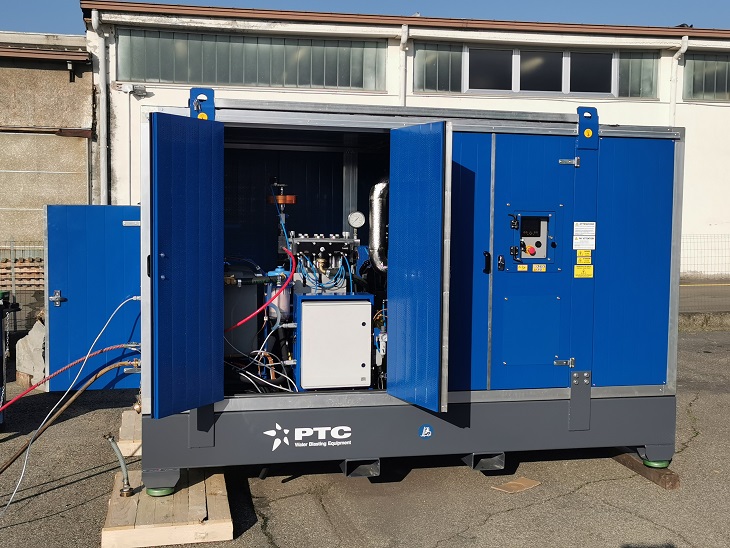
Water jet sandblasting can therefore be used for cleaning in the industrial field on different surfaces and in the most disparate sectors. Let’s see, then, what the main uses are, divided by sector.
In the manufacturing field – from the most artisanal to the most industrialized – very high pressure water washing is very useful in the preparation or maintenance phase for the removal of paint, rust, grease, antifouling materials, salts, and dirt, for example, from raw materials that need to be processed or from a mechanical component that needs repairing.
In metalworking, in particular, sandblasting is used to eliminate welding slag, metal burrs, mill scale and rust.
Water blasting is very widespread in the maritime sector, both as a maintenance and surface preparation technique: the high-pressure water jet, for example, is often used to remove layers of antifouling materials, paint, rust or growths naturally occurring on the hull, deck, storage tanks, oil platforms, hold and many other places on a vessel.
Similarly, in aviation, very high pressure water washing is useful for removing aeronautical hydraulic fluids, rubber and grease that are deposited by aircraft on landing strips.
In the chemical industry and the food industry, however, high-pressure cleaning is used to clean boilers, containers, pipes, tanks, ducts and heat exchangers.
In addition to this short list, very high pressure water washing is used in construction, metallurgy, automotive, military, mining, oil and countless other sectors:
DISCOVER ALL APPLICATION SECTORS OF WATER BLASTING
The advantages of water blasting
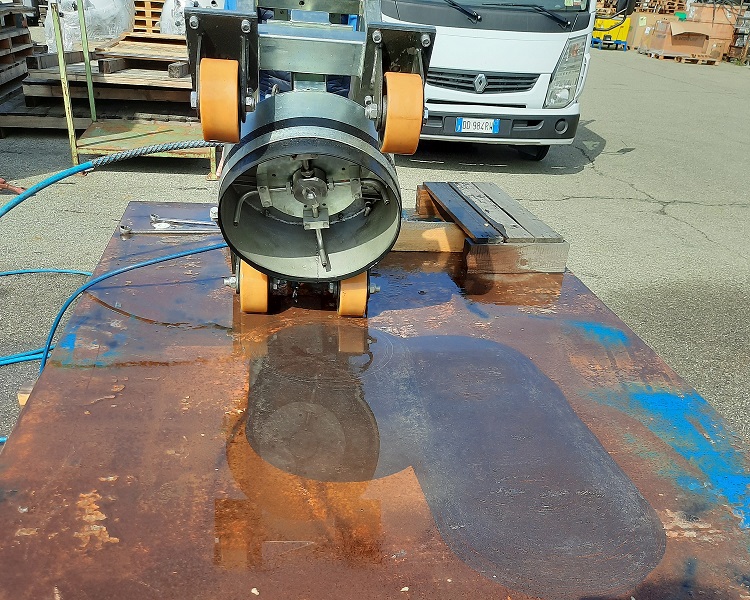
Among the advantages of water blasting in the industrial field, for example, we find the possibility of carrying out regular cleaning operations of machinery and working environments, in order to guarantee continuous processes and safety during the operation of the equipment and reduce plant downtime. profitable.
Furthermore, as only one operator is needed to operate a water blasting unit, significant savings on labor are achieved. At the same time, cleaning with ultra high pressure water does not generate dust or use chemicals that are dangerous for the user.
Finally, since only pure water is used, the removed substances can be easily filtered and there are no acid, alkaline or other solvent residues left to dispose of. Overall, this leads to significant savings on both the supply and disposal of the casting material, with important repercussions on management and environmental costs.

